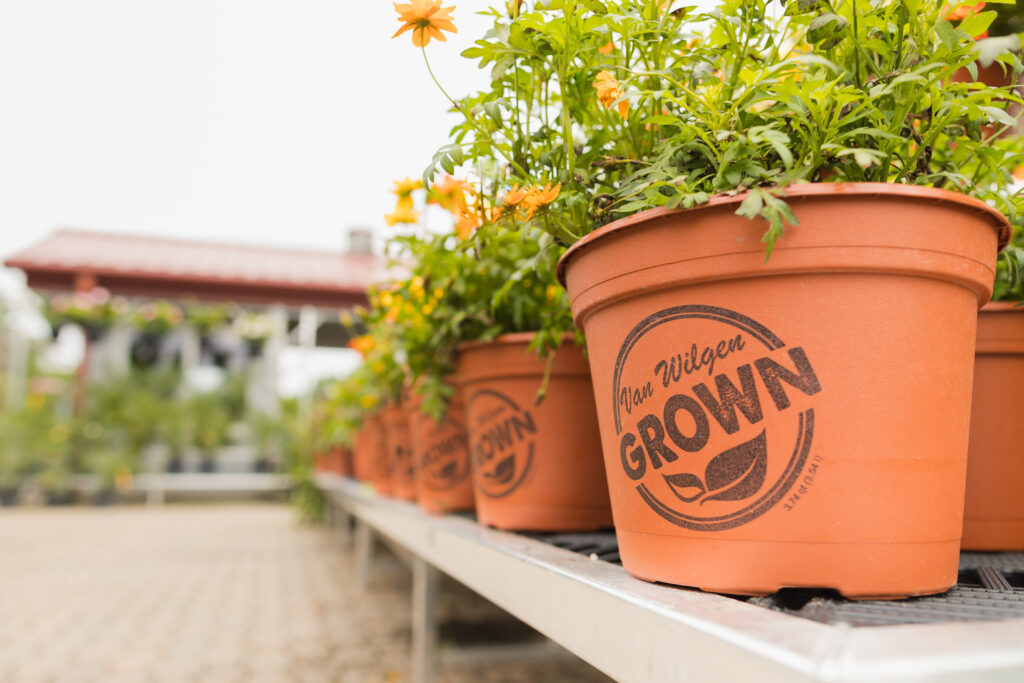Watering Guide for Annuals
(Hanging Baskets, Containers, Landscape, Window Boxes)

All plants need water, however, annual flowers need some extra care. They tend to have shallow root systems and are expected to spend almost their entire lives blooming repeatedly. If they become stressed, they either rush to set seed and not bloom again or slowly die.
A good rule for watering plants is to check the top inch of the soil: if it’s wet, no need to water. If it’s dry, it’s time for a drink! Water during the early morning when you’ll lose less moisture due to evaporation during the day.
Beds vs. Containers
Any plant grown in a container will dry out quickly, and annuals, with their shallow roots, will need water nearly every day. Check the top inch of soil – if it feels dry to the touch, water. You may need to water more than once a day in the extreme heat of summer. Adding Mulch, even in a container, can make an appreciable difference in water retention.
Annuals planted in flower beds may not need as much water as containers. It will depend on how well-drained the soil is and how much competition for water there is from other plants close by.
Specific Plant Needs
How much you’ll have to water depends on the plants you choose. Drought-tolerant annuals, such as zinnia, marigolds, and cleome, will require minimal watering; once a week will probably be fine. Others, such as snapdragons, alyssum, and impatiens need regular water, or they will suffer stress.
Your plants will be the best indicator of when to water and hint to whether or not you are giving them enough to drink. When annuals don’t get enough water, they can look pale or dull and wilt quickly. If they are wilting during the day and reviving at night, you can be certain that they need more water during the day’s heat, additional mulch, or a shadier spot.
The signs of over-watering are similar to under-watering, pale leaves, and wilting. You should be able to determine which it is by pushing your finger into the soil and checking to see if it is soggy or bone dry. The water needs of your annuals vary with the weather and the seasons, and you should adjust accordingly.